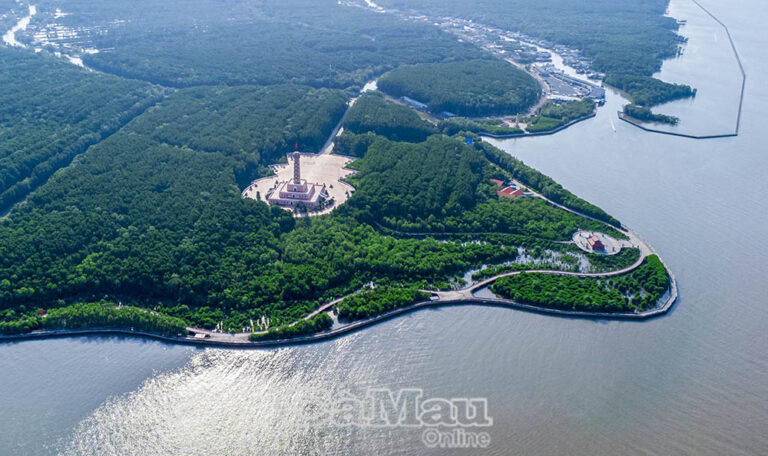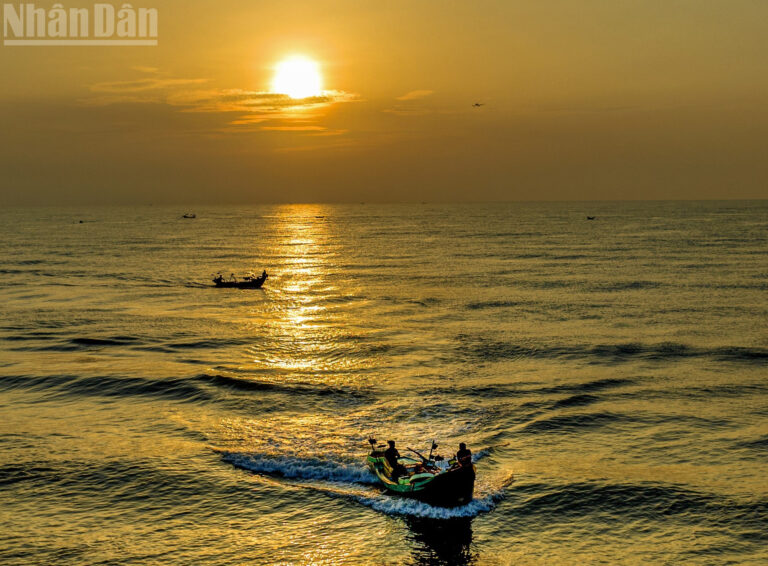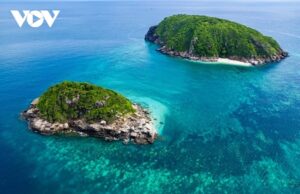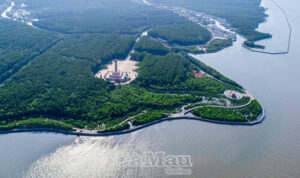If you were to ask an expat living in Ha Noi 100 years ago what they most associate with Ba Vi, you’d probably get the same answer as today.

The ruins of the Children's Summer Camp, slowly being reclaimed by the forest. — VNS Photos Sean Nolan
“A weekend trip out of the city!”
At this time of year, Ba Vi National Park is most famous for its da quy flowers, which bloom in the first few weeks of December. In the evenings the road leading to the top of the mountain is claustrophobically busy, with visitors lining both sides of the road to get a snap or three of the yellow flowers before they disappear for another year.
I decided to visit Ba Vi for another reason, one that is perhaps less well-known among the expat community, despite an obvious link to our history in Viet Nam. To avoid the crowds, I headed there at dawn, to make the most of having the park to myself.
Ba Vi National Park is about 60km from Ha Noi. The entrance is at the foot of a winding road that runs all the way to the top of the mountain, almost 1300m above sea level. By car or motorbike, it takes just under an hour to reach the top, but in that hour the climate changes a lot – and that has always been the attraction.
During the French colonial era, which ended after the Second World War, the cooler mountain climate made Ba Vi an attractive escape from the heat of the city for French officials and their families, just as it is among today's expat community.
Like Tam Dao and Da Lat, Ba Vi was chosen for this reason as the site for colonial villas and retreats for French officials. However, in comparison to some of the stunning examples of colonial architecture still visible in Ha Noi today, those in Ba Vi are dilapidated and lie in ruins, hidden away in the forest that is trying to reclaim them.
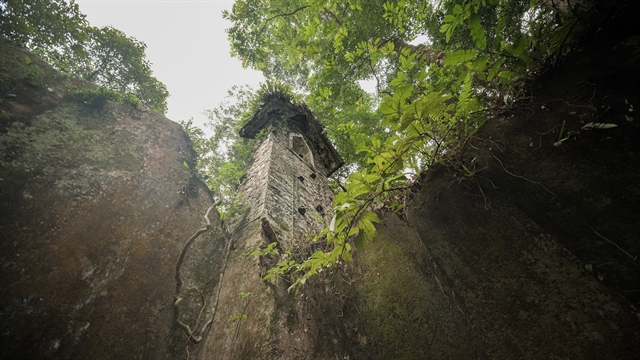
The bell tower and its intricate brickwork can be seen best from inside the church.
The first of the French ruins can be found at 400m above sea level, about four kilometres from the national park office. A sign by the road heralds the entrance to a French Summer Camp, built for the children of colonial settlers. It lies a short distance into the woods – just watch out for the creepy crawlies on the way!
Time has overtaken most of the architecture, and these are the ruins in the worst condition. The roofs and doors are gone and the stone walls are covered in moss and exposed to the elements. Some floor tiles and a collapsed chimney are still visible though, providing a glimpse of what the expat community 100 years ago would have seen too.
A little further up the mountain, at 600m above sea level, is the Colonel's Palace. A military establishment, these walls are over two metres high and half a metre thick. Sub-machine gun emplacements defend the approach, juxtaposing the children’s summer camp a little further down the hill. These ruins are a little more well preserved than the children’s camp, perhaps owing to their military design.
However, the most impressive remains lie another 200m uphill. Following a steep left turn away from the main road, a bumpy concrete track leads through the woods. The trees get denser the deeper you go, but don’t be put off yet – it is worth the wait!

A cross, its original location unclear, now rests against a wall inside the church.
After a couple of hundred metres the road leads to a clearing. A church, well preserved from the outside, stands proudly on the left, surrounded by trees. At dawn, a low mist clings to the walls. Completing the eerie, horror-movie feel, bats weave in and out of the hollow windows.
They are obviously not used to being disturbed so early – one unsuspecting bat collided with my unsuspecting face, causing a moment of high stress for us both.
The consequence of passing time is clearer from the inside. Although the walls and small bell tower are still standing, the roof is long gone, providing an unobscured view of the sky above. Trees roots have become intertwined with the walls, and graffiti, some of it so old that it too has faded, adorn the walls within reach.
By the wide double doors at the entrance is a pile of masonry, perhaps fallen from the arch above. Despite being in a heap on the floor, the intricate engravings are still clear, defiant against the passing of time. The floor tiles, on the raised floor where the altar once would have stood, still show their circular, uniform design too.
Resting against the wall is another cross, though where it was originally isn’t clear. Delicately balanced, it looks as though it could have been put there yesterday; in reality, it may have been there for years. There is another cross too, this one cut into the wall behind the altar, casting a shadow on where the congregation would have once gathered.
As for the congregation, though their reasons for being in Viet Nam would have been very different to the reasons today's expat community are here, in Ba Vi the reasons are not too dissimilar – a weekend in the mountains, and a chance to get out of the capital city.
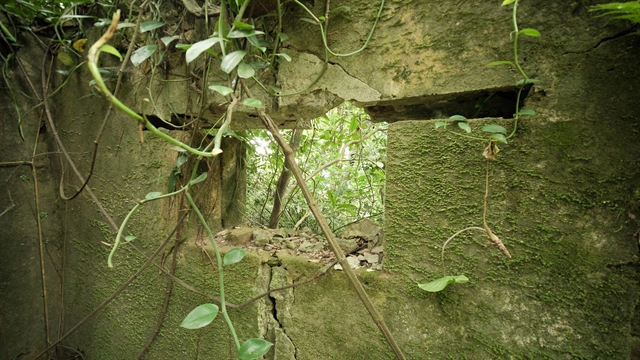
The military buildings have fared slightly better.
Sean Nolan


